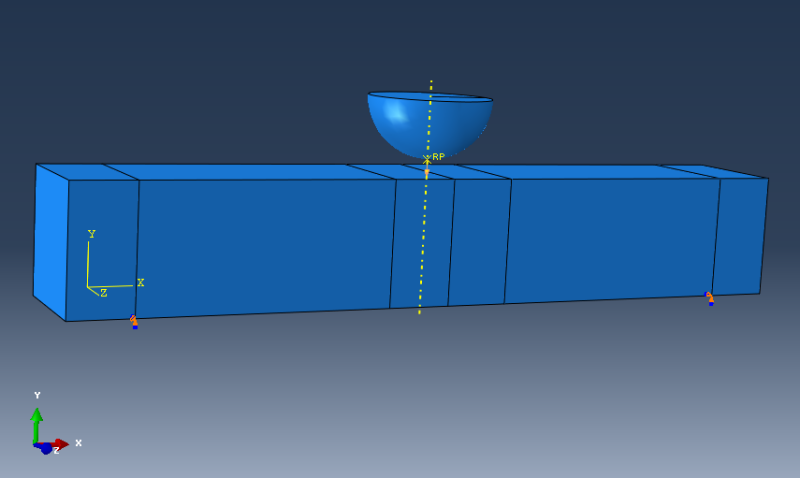StathPol12
Aerospace
- Jan 4, 2016
- 19
Dear all,
I would like to ask if anyone can help me with an issue that I came in contact with.
I am trying to model an impact event of a dropped test and I would like to model the gravity as well. The simulation consists of an analytical rigid surface for the projectile including a reference point to apply the weight, velocity and gravity. The second part is a concrete beam (100x100x600) meshed using C3D8R elements .
The weight is 10.6 kg dropped in a free fall with an impact velocity of 4.43 m/s. I also have restrained the degrees of freedom on the bullet, except from the translation movement in the vertical direction.
I have defined three steps for the impact.
1st step: application of boundary conditions
2nd step: application of velocity
3rd step: application of weight x gravity using a load (also an amplitude was used).
The results do not seem to be realistic as I think something goes wrong with the definition of the steps. I am wondering if anyone can provide me with any help on this issue.
Many thanks to all,
StathiPol12
I would like to ask if anyone can help me with an issue that I came in contact with.
I am trying to model an impact event of a dropped test and I would like to model the gravity as well. The simulation consists of an analytical rigid surface for the projectile including a reference point to apply the weight, velocity and gravity. The second part is a concrete beam (100x100x600) meshed using C3D8R elements .
The weight is 10.6 kg dropped in a free fall with an impact velocity of 4.43 m/s. I also have restrained the degrees of freedom on the bullet, except from the translation movement in the vertical direction.
I have defined three steps for the impact.
1st step: application of boundary conditions
2nd step: application of velocity
3rd step: application of weight x gravity using a load (also an amplitude was used).
The results do not seem to be realistic as I think something goes wrong with the definition of the steps. I am wondering if anyone can provide me with any help on this issue.
Many thanks to all,
StathiPol12

